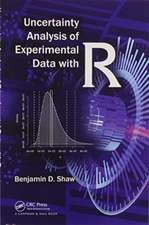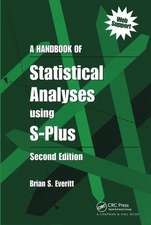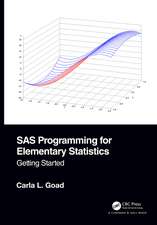Benefit/Cost-Driven Software Development: With Benefit Points and Size Points: Simula SpringerBriefs on Computing, cartea 8
Autor Jo Erskine Hannayen Limba Engleză Paperback – 18 aug 2021
Readers can then use these benefit estimates together with cost estimates to create a benefit/cost index to help them decide which functionalities to send into construction and in what order. This allows them to focus on constructing the functionality that offers the best value for money at an early stage.
Although benefits management involves a wide range of activities in addition to estimation and monitoring, the techniques in this book provides a clear guide to achieving what has always been the goal of project and portfolio stakeholders: developing systems that produce as much usefulness and value as possible for the money invested. The techniques can also help deal with vicarious motives and obstacles that prevent this happening. The book equips readers to recognize when a project budget should not be spent in full and resources be allocated elsewhere in a portfolio instead. It also provides development managers and upper management with common ground as a basis for making informed decisions.
Preț: 232.74 lei
Preț vechi: 290.93 lei
-20% Nou
Puncte Express: 349
Preț estimativ în valută:
44.53€ • 46.62$ • 36.85£
44.53€ • 46.62$ • 36.85£
Carte tipărită la comandă
Livrare economică 05-19 aprilie
Preluare comenzi: 021 569.72.76
Specificații
ISBN-13: 9783030742171
ISBN-10: 3030742172
Pagini: 103
Ilustrații: XIII, 103 p. 60 illus.
Dimensiuni: 155 x 235 x 11 mm
Greutate: 0.45 kg
Ediția:1st ed. 2021
Editura: Springer International Publishing
Colecția Springer
Seria Simula SpringerBriefs on Computing
Locul publicării:Cham, Switzerland
ISBN-10: 3030742172
Pagini: 103
Ilustrații: XIII, 103 p. 60 illus.
Dimensiuni: 155 x 235 x 11 mm
Greutate: 0.45 kg
Ediția:1st ed. 2021
Editura: Springer International Publishing
Colecția Springer
Seria Simula SpringerBriefs on Computing
Locul publicării:Cham, Switzerland
Cuprins
1 Business Value Disadvantaged.- 2 Benefit Points – An Overview.- 3 Benefit Points for the Project.- The Best Part of the Story.- 4 Benefit Points for the Portfolio.- 5 Earned Business Value Management.- 6 Agile Uncertainty Assessment for Benefit Points and Size Points.- 7 Benefit and Cost Periodized – Stretching Your Points.- 8 Final Remarks.
Notă biografică
JO ERSKINE HANNAY is a senior scientist at the Norwegian Computing Center in Oslo, an associate professor at the University of Oslo and an adjunct researcher at the EDOS Centre at Simula Metropolitan Center for Digital Engineering. His research interests include benefits management, benefit and cost estimation, expertise and skill acquisition, the effects of human factors on programming, simulation-based training and machine learning. Hannay received a Ph.D. from the Laboratory for Foundations of Computer Science, University of Edinburgh, Scotland.
Textul de pe ultima copertă
This open access book presents a set of basic techniques for estimating the benefit of IT development projects and portfolios. It also offers methods for monitoring how much of that estimated benefit is being achieved during projects.
Readers can then use these benefit estimates together with cost estimates to create a benefit/cost index to help them decide which functionalities to send into construction and in what order. This allows them to focus on constructing the functionality that offers the best value for money at an early stage.
Although benefits management involves a wide range of activities in addition to estimation and monitoring, the techniques in this book provides a clear guide to achieving what has always been the goal of project and portfolio stakeholders: developing systems that produce as much usefulness and value as possible for the money invested. The techniques can also help deal with vicarious motives and obstacles that prevent this happening. The book equips readers to recognize when a project budget should not be spent in full and resources be allocated elsewhere in a portfolio instead. It also provides development managers and upper management with common ground as a basis for making informed decisions.
Readers can then use these benefit estimates together with cost estimates to create a benefit/cost index to help them decide which functionalities to send into construction and in what order. This allows them to focus on constructing the functionality that offers the best value for money at an early stage.
Although benefits management involves a wide range of activities in addition to estimation and monitoring, the techniques in this book provides a clear guide to achieving what has always been the goal of project and portfolio stakeholders: developing systems that produce as much usefulness and value as possible for the money invested. The techniques can also help deal with vicarious motives and obstacles that prevent this happening. The book equips readers to recognize when a project budget should not be spent in full and resources be allocated elsewhere in a portfolio instead. It also provides development managers and upper management with common ground as a basis for making informed decisions.
Caracteristici
This book is open access, which means that you have free and unlimited access



























